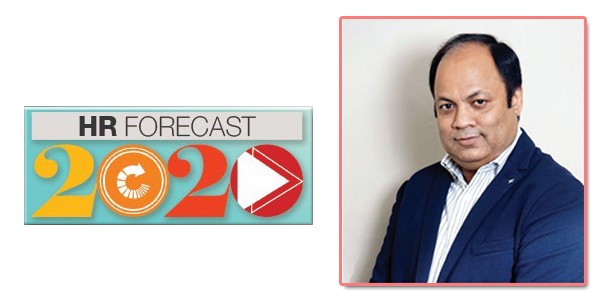Technology, data, employee experience: What’s high on agenda
In fact, it is all three. Organisations of the next decade expect HR to redefine the way it provides services to the employees. For delivery of efficient and on-time services through mobile, cloud-based technology platforms it is imperative that they be backed by insightful analytics on all key people metrics, right from pre-hiring to post-separation.
Employees expect user experience, which is non-intrusive but intuitive, with a predictive element built in to meet their needs and expectations. There will be constant thrust to enhance employee experience to humanise the offerings, which are useful and usable while designing and developing HR-engagement initiatives.
Artificial Intelligence (AI) and Machine Learning (ML) will be continuously leveraged in operational and repetitive actions, for higher efficiency and to come up with predictive solutions. Given the huge volume of data and information being generated, the need for the human touch in the form of experts who can engage on specific challenges employees are facing, and provide rapid problem-solving approaches, performance coaching and feedback will continue to be the focus.
The biggest challenge for HR
Learning and development is the biggest challenge. With the continuous enhancement of technology and automation, traditional ways of working are undergoing rapid change. Rate of redundancies will be high, roles with new skills will be created, and hence, reskilling will be a key challenge.
The focus on learning and development of employees will increase given the interconnected world and blurring of boundaries between workforce and technology.
User experience: Understanding the needs and mindset of the employees will help in taking proactive steps and enhancing user experience, which will lead to increased productivity, job satisfaction and higher retention.
Social Media: Agile social media presence and managing proactive internal communication with the employees, which is multidirectional and collaborative will be essential. Also, there should be a keenness to listen, act and communicate as a
guide post to engage with the employees.
The next CHRO – the learning officer, the talent officer, the HRBP or the engagement officer
The chief of human resources is a business-oriented person who has deep functional acumen and the ability to operate in ambiguous situations with empathy. Future CHROs will not necessarily be restricted to the HR function, but will be people with the ability to triangulate people agenda, leverage technology and business imperatives for an agile and motivated workforce.
Rising employee benefits cost
Employee benefits cost will continue to be a challenge. The cost of healthcare, social security and employee engagement will be key factors when an employee decides to join any organisation or when ‘Employer of Choice Surveys’ are done. Rewarding good health and motivating employee well-being are ways to counter rising costs.
There is an increasing trend of co-sharing of cost in insurance policies, which reduces the cost of such programmes. Bulk registrations, exclusive tie-ups, and rigorous institutional negotiations with the service providers help to keep the costs down. It’s a tough balancing act and choice has to be made by the organisations as to what length they wish to go, because the welfare programmes are one of the most effective measures in retention. And this is so well reflected in the choice of employment between public and private sector.
HR as the ethics keeper
With the enhanced use of social media, opening up of sharing platforms, awareness of individual and corporate rights and responsibilities, better corporate compliance, monitoring and reporting norms, ethics and compliance is front and centre of good corporate governance.
Ethics per se is not restricted to HR, but everyone in the organisation is a custodian of the same. A leader’s role is the key to having good ethics within the organisation.
HR should proactively work to put the Ethics and Compliance (E&C) codes, hotlines for reporting anonymously, whistle-blower process and anti-retaliation policies in place. It should be the focus of HR to drive corporate values through onboarding, establishing training programmes and setting up an investigation framework.
A visible and human face to the compliance programme in partnership with business leaders is very effective in creating and sustaining an E&C culture in the organisation.
(This article first appeared in HRKatha print magazine)



